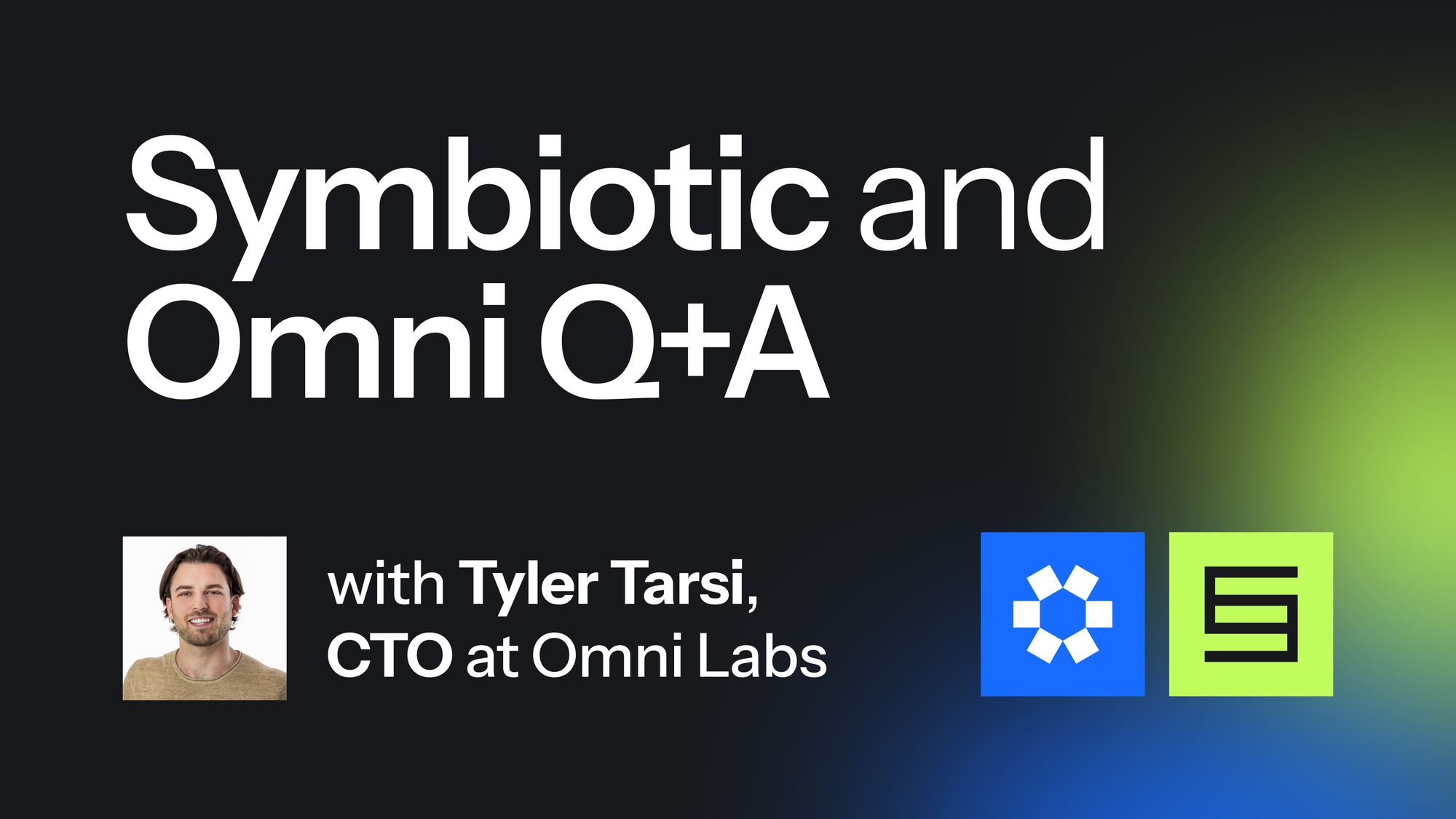Symbiotic and Omni Q&A

Last week, Omni revealed that Symbiotic would be the first protocol to leverage Omni for cross-rollup deposits into its protocol on Ethereum L1. To dive deeper into this exciting development, we sat down with Tyler Tarsi, CTO of Omni Labs.
- What unique challenges around Ethereum's fragmentation does this integration address, and how does it expand Symbiotic’s access to more of Ethereum?
Users and capital are scattered across Ethereum. This began in 2021 with the launches of Arbitrum and Optimism and the problem has intensified as Ethereum's rollup-centric roadmap manifests.
The industry’s traditional solution was to encourage developers to build cross-chain applications, but this forces developers to grapple with distributed state and manage cross-chain complexities for their users. Our experience working alongside hundreds of teams in the Ethereum ecosystem has made one thing clear: developers want to avoid these burdens. We solve this problem.
Omni enables teams like Symbiotic to tap into Ethereum’s rollups ecosystem, accessing users and liquidity, without requiring any modifications to their existing contracts on Ethereum L1 nor the deployment of new ones.
- What key factors have allowed Omni to shorten the integration process from months to days, and how does this reflect the scalability of future cross-chain integrations?
Traditionally, building cross-chain applications required developers to modify their core smart contracts to enable cross-chain functionality. Every change to an application’s onchain logic demands a new audit to ensure a secure deployment—a process that can take anywhere from one to six months, depending on the auditor’s availability and the complexity of the updates. Not to mention significantly increasing smart complexity, something every dapp developer wants to avoid.
With Omni, developers can bypass these challenges entirely. There’s no need to alter smart contracts to achieve cross-rollup functionality. Instead, integrating Omni is as simple as making a minor frontend update using the Omni SDK. This connects the application to the Omni solver network, which takes care of cross-chain complexities on behalf of both users and developers.
- How does this integration reduce user friction, specifically enhancing speed and navigational ease for Symbiotic users?
With Omni integrated, Symbiotic can meet users wherever they are. Previously, if a user wanted to deposit into Symbiotic but had funds on a rollup, they had to manually bridge their assets and deposit them on Ethereum L1. Now, users can deposit directly into Symbiotic without ever leaving the Symbiotic website—no need to switch networks, manage gas on Ethereum L1, or endure long wait times.
- Why is it important for Omni to diversify restaking providers by adding Symbiotic (in addition to EigenLayer)?
Adding Symbiotic as a restaking provider allows the Omni protocol to improve its product by: 1) increasing the amount of capital that can secure the network 2) diversifying across multiple providers and reducing risk. Restaking is a fundamental component of Ethereum’s future, and we’re committed to working with top providers to keep Omni as secure as possible.
- What advantages do these integrations bring for driving adoption within the broader Ethereum ecosystem, and how do both Omni and Symbiotic stand out from the competition?
Ethereum has faced increasing competition from monolithic smart contract networks like Solana, which offer users low-latency transactions, minimal fees, and a reduced reliance on bridging. To stay competitive and deliver a competitive, frontier user experience, the entire Ethereum ecosystem needs to feel unified, as though it operates on a single chain. Omni’s approach makes this possible, enabling users to interact with applications like Symbiotic effortlessly, without needing to worry about where those applications are deployed.
- Can you share Omni’s approach to expanding support for additional rollups, and what technical or strategic considerations are being prioritized for future integrations?
At Omni, our mission is to empower developers to create applications that can reach the entire Ethereum ecosystem. We keep a close eye on where user activity is most concentrated across rollup ecosystems. To start, we’ll support Arbitrum, Optimism, and Base, as these networks have shown the most significant traction so far. As new ecosystems emerge, we’ll continue to monitor their growth and expand our network support accordingly.
About Omni
Omni is the abstraction layer for the Ethereum ecosystem, allowing developers to access all the users and liquidity across rollups without upgrading their smart contracts. With Omni, using Ethereum and all of its rollups feels like a singular chain — no bridging, switching RPCs, or gas management. Omni achieves this through coordinating a network of solvers who handle all cross platform complexities.

